25 Easy Ways to Eat More Fruits & Veggies at Every Meal
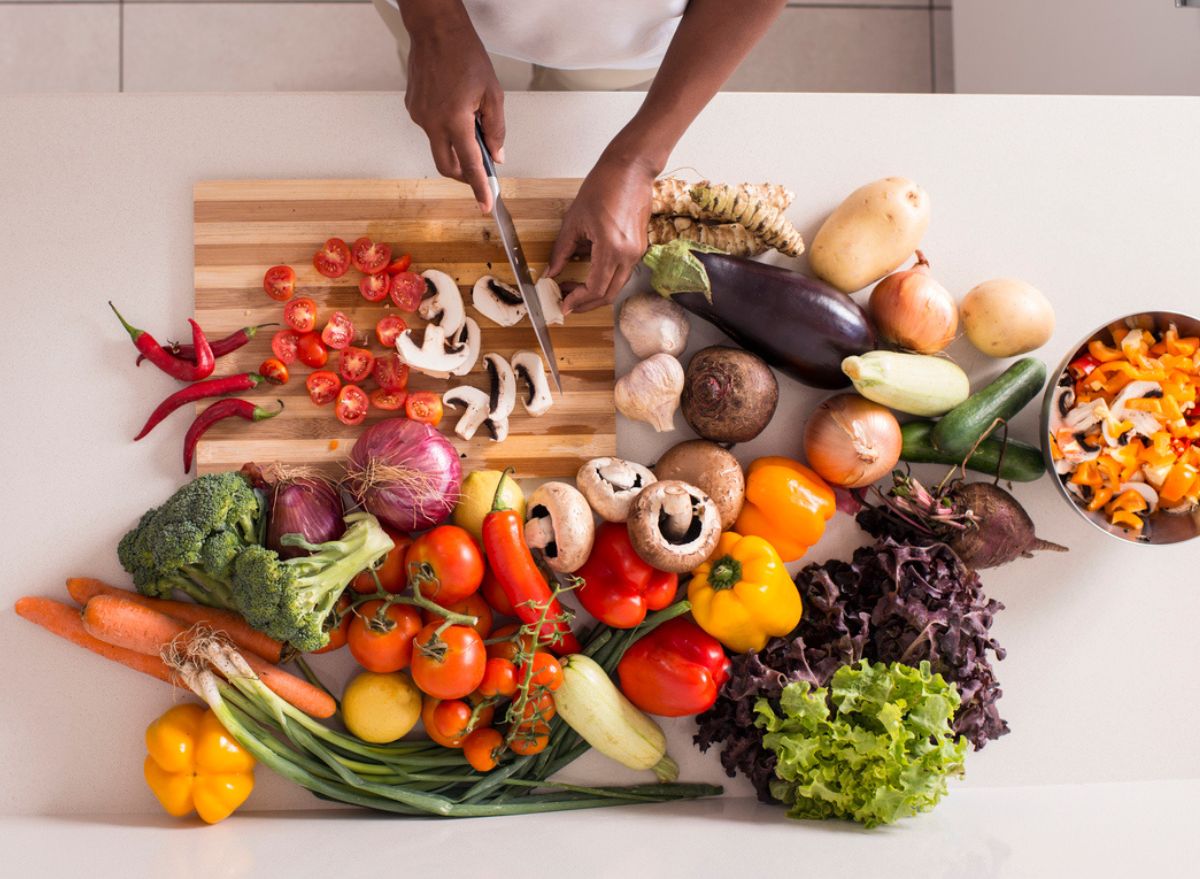
Eating more fruits and vegetables is important for your health, but you may struggle to fit them into your meals throughout the day, especially if you’re not used to eating them often.
“Fruits and vegetables are rich in essential vitamins, minerals, and antioxidants that promote overall health and well-being, including reducing the risk of chronic diseases like heart disease, diabetes, and certain cancers,” says Amy Goodson, MS, RD, CSSD, LD. “They also provide dietary fiber, which aids in digestion and helps you feel full and satisfied, making it easier to manage weight.” Mary Sabat MS, RDN, LD also adds that “By incorporating fruits and vegetables into various aspects of your meals, you’ll not only increase your intake of essential nutrients but will also enjoy a wider variety of flavors and textures in your diet.”
So how can we incorporate more produce into our diets to get these health benefits? Sabat says that the key is “making them readily available and finding creative ways to incorporate them into your meals and snacks,” and Goodson says you can “incorporate them into smoothies, salads, and sandwiches or use them as colorful toppings or substitutes in various dishes.”
There are tons of options for eating more fruits and veggies at every meal, so read on to learn some dietitian-recommended tricks. Then, check out the 18 Best Fruits & Veggies to Keep You Fuller Longer.
Breakfast
Add veggies to your eggs.
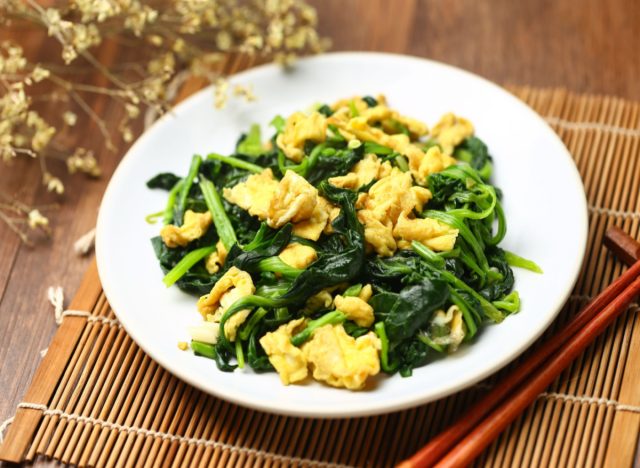
One way you can incorporate more fruits and vegetables when you first wake up is to “Scramble them into your eggs,” says Goodson.
Trista Best, MPH, RD, LD at Balance One Supplements says you can”Include vegetables like spinach, tomatoes, or mushrooms in your omelets or scrambled eggs,” and Sabat suggests including “bell peppers, onions, spinach, or mushrooms for a flavorful morning meal.”
You can also top off your breakfast eggs with some slices of avocado for a filling fruit made of healthy fats and fiber.
Make a smoothie.
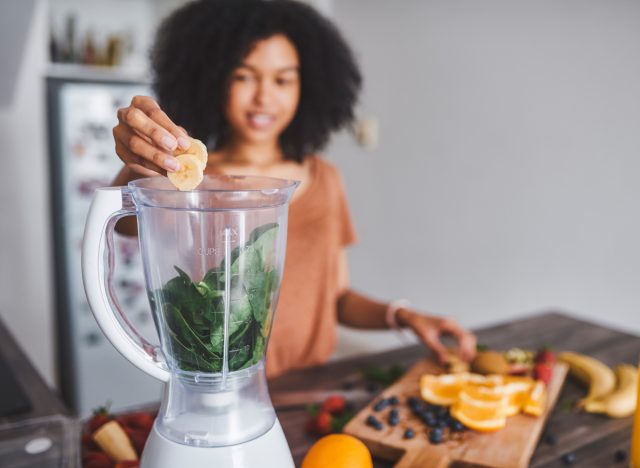
Another super simple way to get more nutrients into your day is by making a smoothie for breakfast.
“Make smoothies by blending your choice of fruits and vegetables,” says Lisa Young, PhD, RDN. “This helps increase your intake of essential nutrients.”
For specific vegetables or fruits to use, Goodson says you can “Blend fruit and spinach or kale into smoothies for a produce-rich breakfast, and you can also add pureed pumpkin or sweet potato into smoothies for added creaminess and nutrients.”
Sabat also mentions that for extra sweetness and flavor, “add some honey or a dash of cinnamon.”
Enjoy a fruit salad.
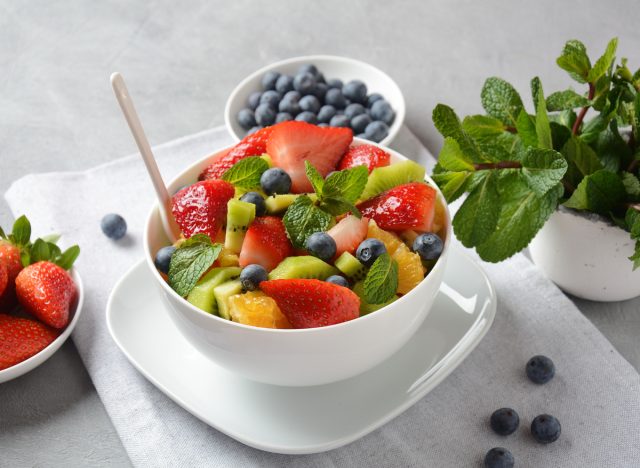
Want more antioxidant-rich fruit in the morning? “Create a colorful fruit salad by mixing a variety of fresh fruits such as berries, oranges, and melon,” says Sabat.
When making a fruit salad, just be sure to pair it with some protein for a balanced breakfast, like scrambled eggs on the side or low-sugar Greek yogurt on top.
Put fruit on top of your yogurt, oats, or cereal.
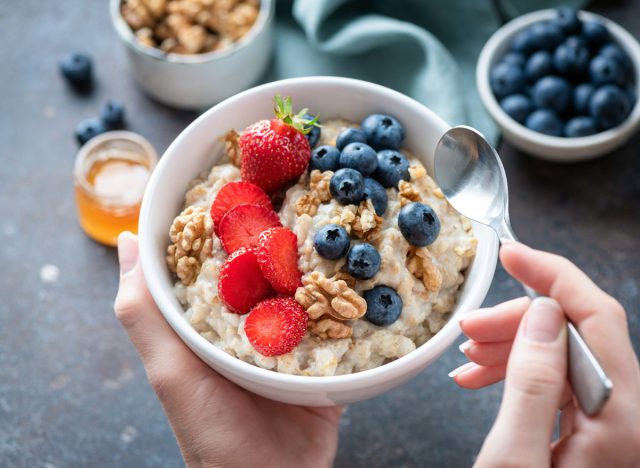
Speaking of yogurt, if you like to start your day with a bowl full of yogurt, oatmeal, or cereal, our dietitians say you can easily up your fruit intake by throwing some of your favorites on top.
Best says she enjoys putting “fresh berries, bananas, or chopped apples” on top of her cereal or oatmeal first thing in the morning.
Lunch
Use avocado as a spread.
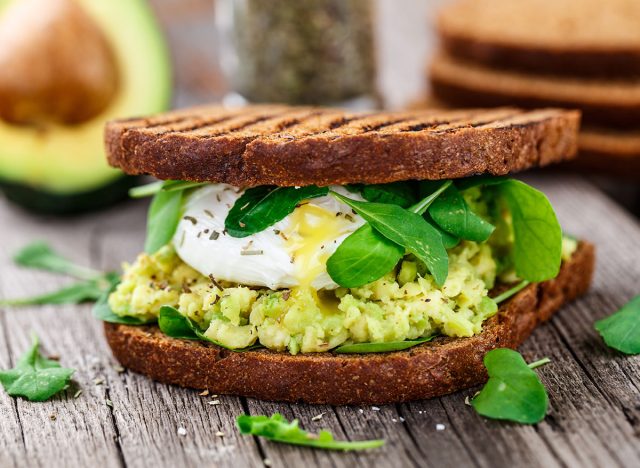
Avocados are one of the healthiest fruits you can eat because they’re full of healthy fats and fiber and according to research, they can help with weight management and healthy aging. One easy way to eat more of this fruit during lunch or dinner, says Goodson, is to “use mashed avocado as your ‘spread’ on sandwiches or wraps.”
Sneak vegetables into a sauce.
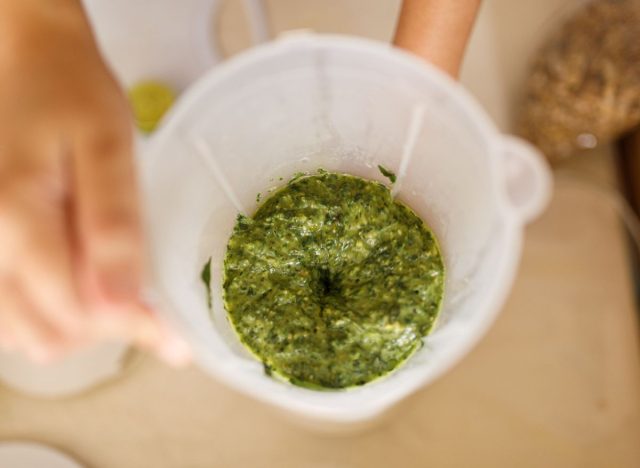
There are plenty of ways to sneak vegetables into your lunchtime meal, like blending your favorites into a homemade sauce.
“Sneak vegetables into sauces and soups by pureeing or finely chopping them,” says Goodson. Sabat agrees, saying “This is a great way to get the kids and picky eaters to eat more veggies.” She suggests blending vegetables like spinach, carrots, or butternut squash into soups or pasta sauces to start.
Make veggie chips.
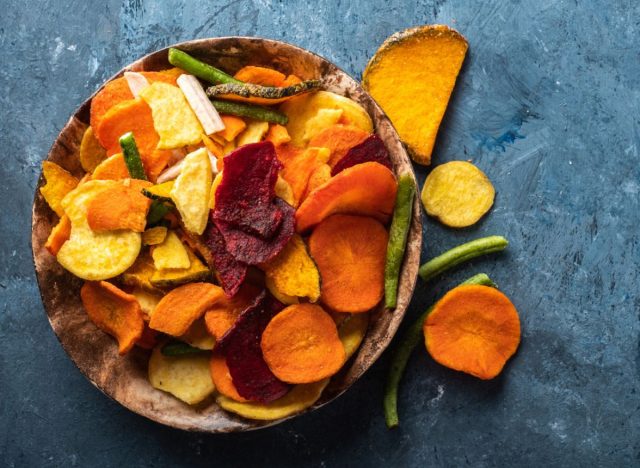
You can use the air fryer for just about anything, including making sure that you get more vegetables at lunch. For instance, Goodson says she loves “Air frying veggies to make ‘chips’ with meals,” and to do this, you can use vegetables like carrots, beets, sweet potato, or zucchini.
Make a main course salad.
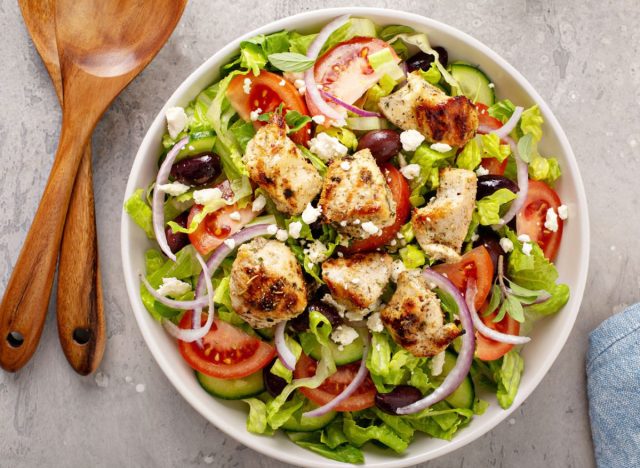
Don’t underestimate the nutrient density and flavor potential of a salad. Sabat suggests opting for a salad as a main course when you need more vegetables because you can load it up with “leafy greens, cucumbers, cherry tomatoes, and grated carrots.” She says you can also “Add grilled chicken, tofu, or beans for protein.”
Pack veggies into your sandwich.
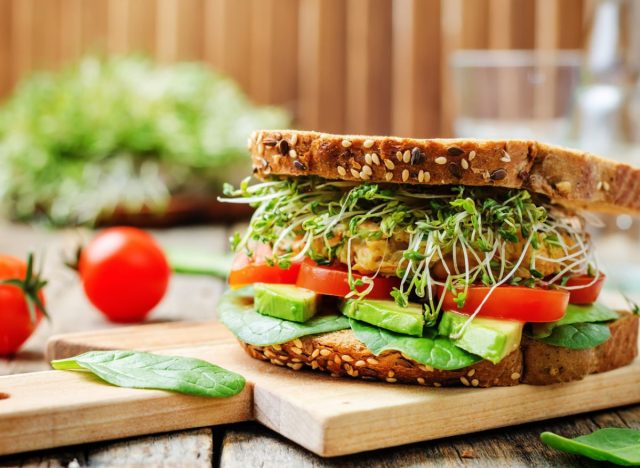
If a salad isn’t your thing, you can always make a sandwich and incorporate some of your favorite fruits and vegetables that way. For instance, Sabat says you can “Make a veggie-packed sandwich or wrap with plenty of lettuce, tomato, and avocado.” Or for a hot sandwich, you can make a panini with zucchini, eggplant, and bell peppers pressed with deliciously melted cheese.
Incorporate a side salad.
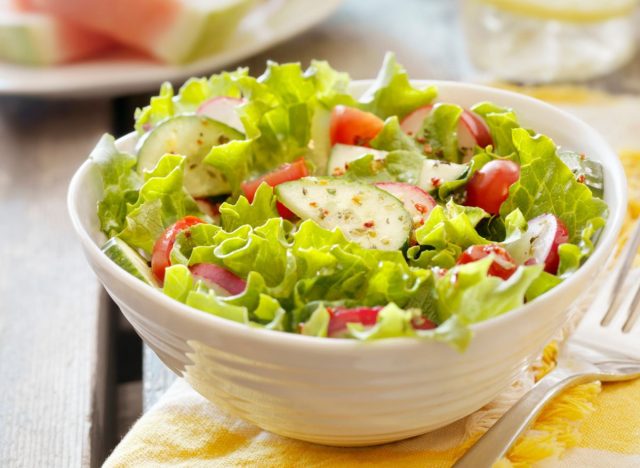
Sometimes your main meal is short on produce, but when this is the case, a side salad can come to the rescue. Best suggests adding a side salad to your meals “with a variety of colorful vegetables.”
To include both fruit and vegetables in your salad, fill a bowl with leafy greens and top with blueberries, strawberries, or orange slices. Then top it off with a classic balsamic vinaigrette for a sweet and savory side dish packed full of nutrients.
Make a soup
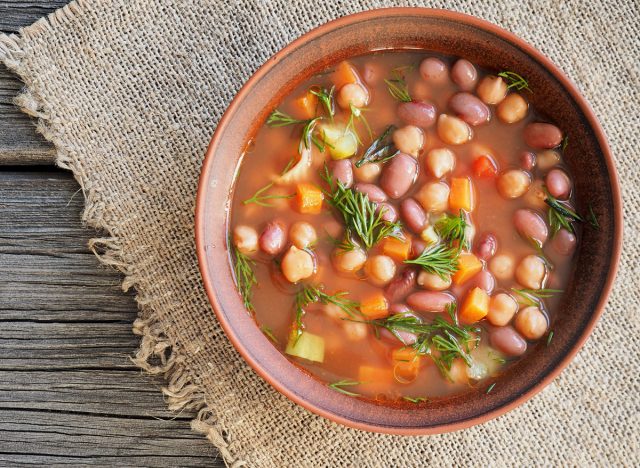
To make a healthy and hearty meal you can reheat throughout the week, Best suggests cooking up a delicious vegetable-based soup. You can make a sweet potato and black bean chili, a butternut squash soup, or a lentil soup with all of your favorite veggies. This way, you’re guaranteed to have some extra vegetables in every bite.
Dinner
Try a simple stir-fry.
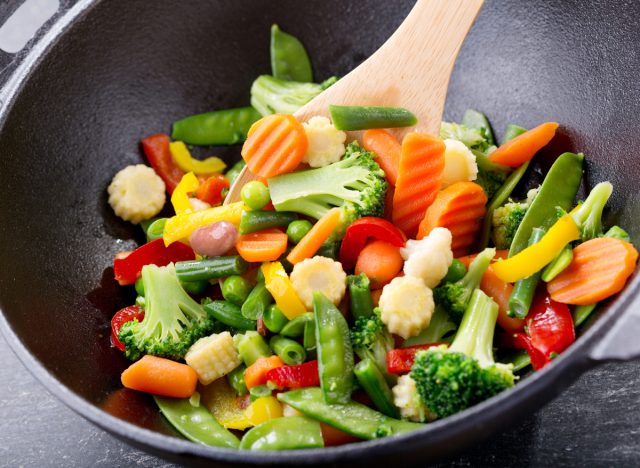
If you need a way to throw some vegetables into your meal, Young suggests trying a quick stir-fry method.
“Stir-frying is a good way to incorporate vegetables into your meals,” says Young. “It requires minimal preparation and the cooking method retains the nutritional value of the vegetable.”
Replace traditional pasta with veggie noodles.
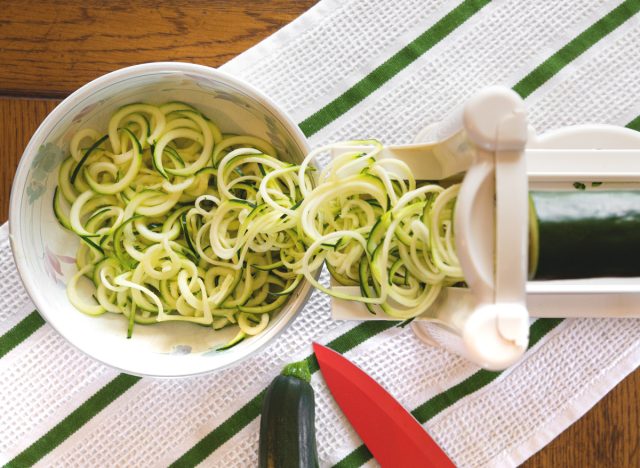
For a simple veggie solution, our dietitians love using some tasty spiralized vegetables instead of pasta for a dinner dish. “You can replace traditional pasta with spiralized zucchini or carrots for a lighter meal,” says Goodson.
Young adds that beyond using spiralized zucchini or carrots, you can also replace your dinner grains with cauliflower rice or spaghetti squash. She says, “These substitutions can help increase your intake of essential vitamins, minerals, and dietary fiber.”
Use a veggie crust.
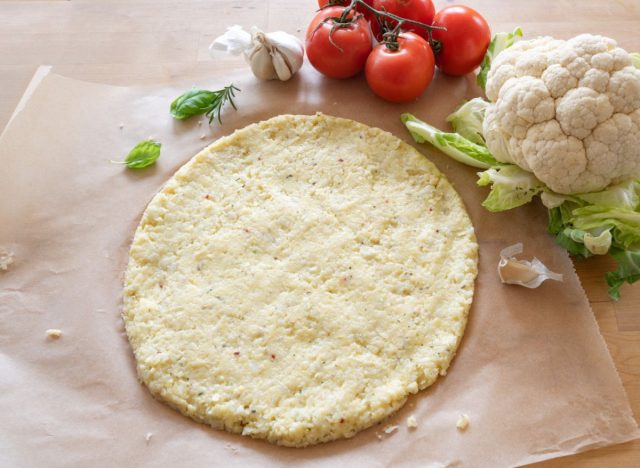
According to Goodson, an easy cooking trick when you want some extra nutrients in your dinner is to “use cauliflower crust as the base for pizza or flatbreads.” Aside from cauliflower, you can also use veggies like kale, spinach, or broccoli to make your crust. Whichever vegetable crust you choose, you’ll get a much more nutrient-dense experience than if you use a regular pizza crust.
Make a sheet pan dinner.
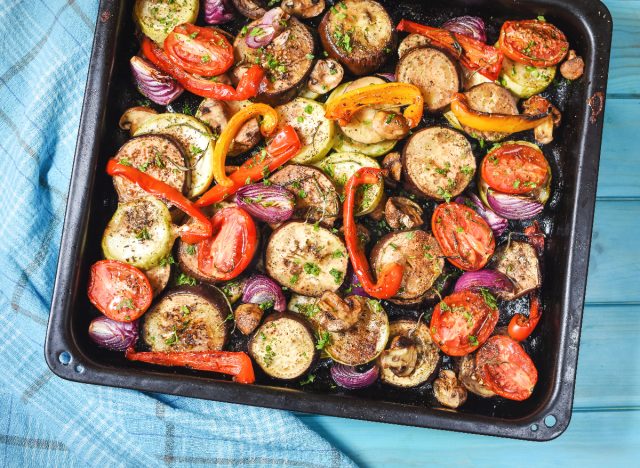
An effortless way to make a nutrient-dense dinner is to assemble a sheet pan full of vegetables and herbs.
“Roast a sheet pan of mixed vegetables as a side dish for dinner,” says Sabat. “Toss them in olive oil, garlic, and your favorite seasonings before baking.”
You can also add a protein of choice to your sheet pan dinner, such as chicken, steak, or fish.
Always have frozen fruits and vegetables on hand.
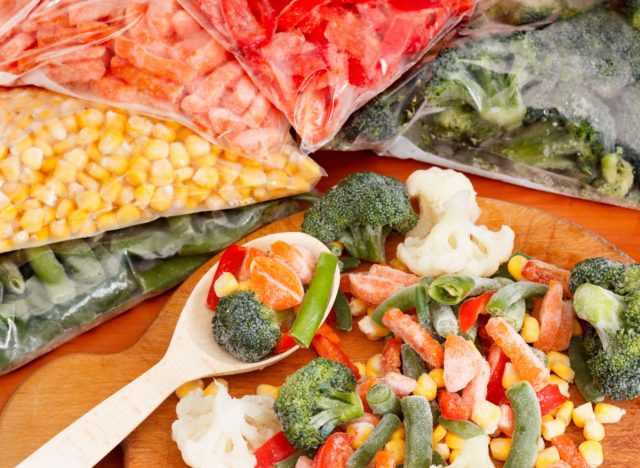
Sabat says that an easy trick for increasing your veggie intake is to make sure your freezer is stocked. “Always have a variety of frozen vegetables in the freezer to quickly add to any meal,” she says. That way, you don’t have to worry about your fresh produce going bad, and you know you’ll always have some on hand ready to go.
Having frozen fruit available is helpful too, as you can use some in smoothies, yogurt parfaits, or just to snack on when you want a cold sweet treat.
Add vegetables to your pasta.
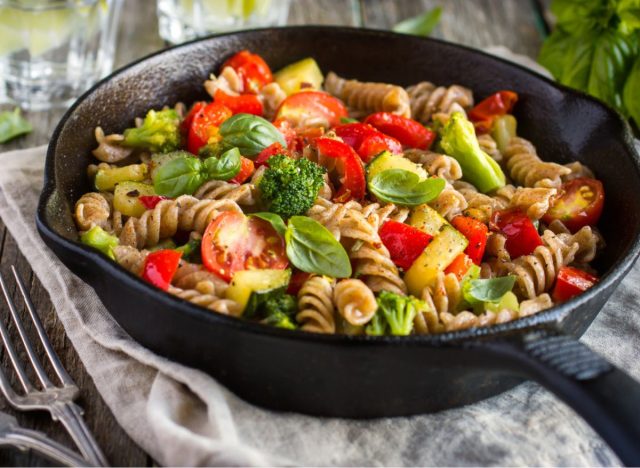
We mentioned replacing your pasta with vegetable-based noodles or rice, but if you are in the mood for regular grain pasta, you can just simply mix your vegetables into the pasta dish itself.
Sabat says you can “Toss sautéed or roasted vegetables like zucchini, cherry tomatoes, or spinach into your favorite pasta dishes for added color and nutrition.”
Get creative with your sides.
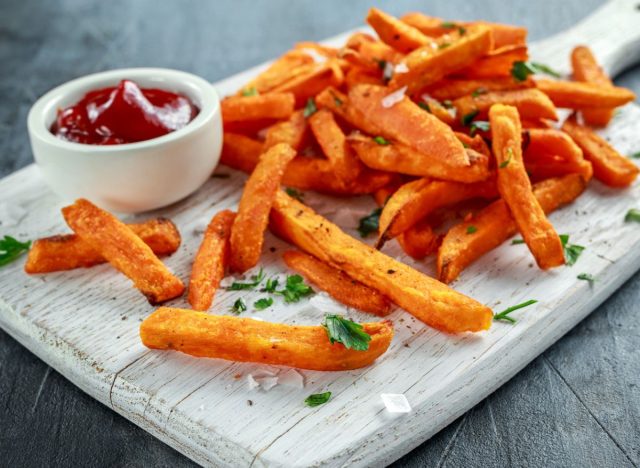
Best suggests getting creative with your side items to ensure you’re still getting a serving (or two) of fruits or vegetables in your dinner meal.
“Swap traditional side dishes with healthier options, such as sweet potato fries, roasted Brussels sprouts, or grilled asparagus,” says Best. Or, if the dish goes well with it, you can “Mix fruits into yogurt or cottage cheese for a delicious and nutritious side.”
Snacks
Eat veggie sticks with a dip.
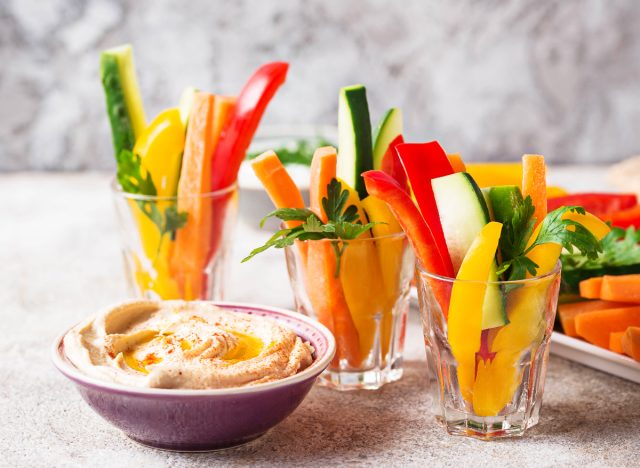
One of the most straightforward ways of incorporating vegetables into your snack time? Just slice them up to make veggie sticks, and “dip them in hummus or guacamole for a satisfying snack,” says Goodson.
You can use a variety of different vegetables, but we love bell peppers, carrots, and zucchini for veggie snack sticks.
Add fruit or veggies to your cheese and cracker snack.
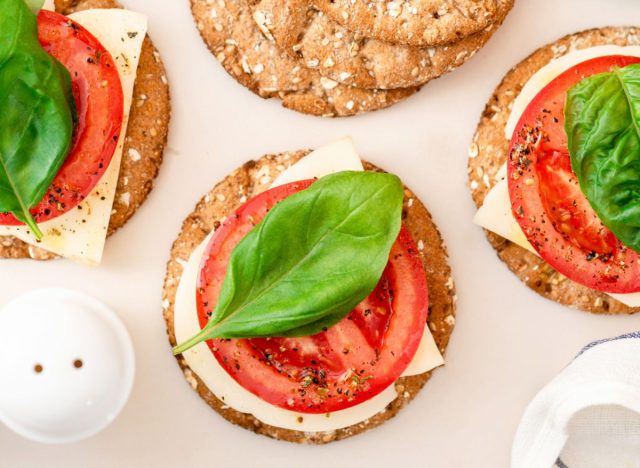
Cheese and crackers are a classic snack choice, and you can easily up your intake of fruits and vegetables by just simply adding some to your crackers.
Goodson suggests “Topping whole-grain crackers with sliced tomatoes and cheese,” or you can make something like crackers with brie cheese and berries, or crackers with cream cheese and cucumber.
Make energy bites with dates.
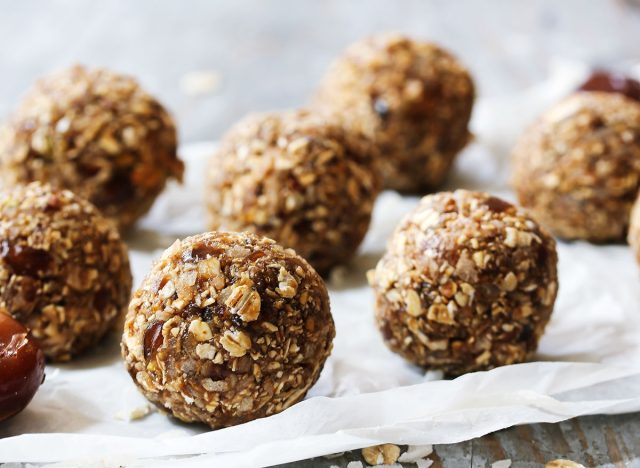
Energy bites are a great snack you can make at home and have for the rest of the week, and they’re usually made of things like oats, nut butter, seeds, and nuts. According to Goodson, you can add some fruit into these bites by pureeing Medjool dates and using them “as the ‘sticky glue’ to fold the energy bites together.”
Have pre-cut fruit and vegetables on hand.
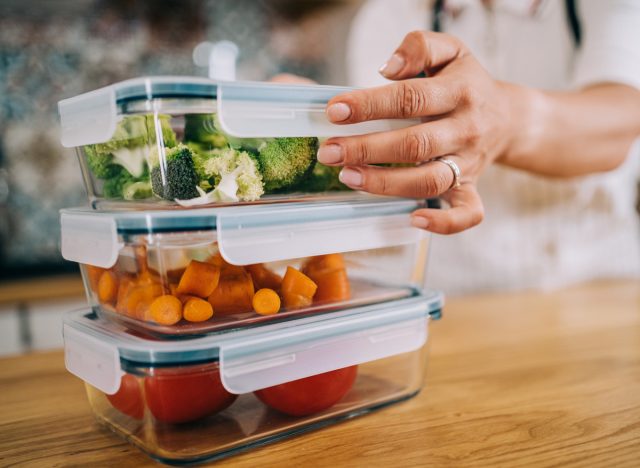
You’re way more likely to snack on something if you have it readily available, which is why our dietitians say having fresh, pre-cut slices of fruit and veggies is key to eating more produce at snack time.
“Keep a bowl of washed and cut fruits or veggies on your kitchen counter or in the fridge for quick and easy snacking,” says Sabat. “Carrot sticks, apple slices, and grape tomatoes make great options.”
Young agrees, saying, “Pre-cut your fruits and vegetables and keep them refrigerated. Having them readily available makes it convenient to incorporate into every meal.”
Dessert
Add vegetables to your baked goods.
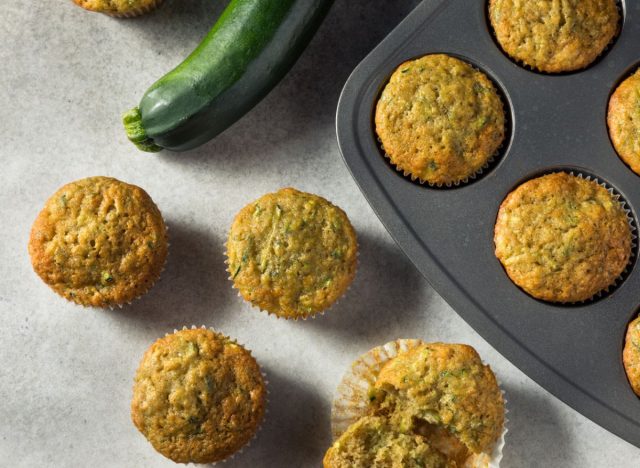
You may not think that vegetables and dessert belong in the same sentence, but there are easy ways to sneak veggies into your favorite baked goods. For instance, Goodson says you can “Incorporate grated carrots or zucchini into baked goods such as muffins or pancakes.”
Make a berry parfait for dessert.
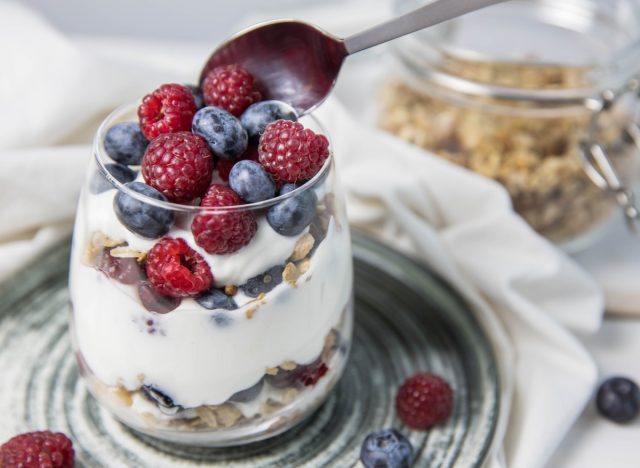
When the craving for a little something sweet strikes at the end of a meal, Sabat says you can use this time to get more fruit into your diet. “Create a fruit-based dessert like a berry parfait with layers of yogurt, granola, and fresh berries,” she says.
Make a fruit compote.
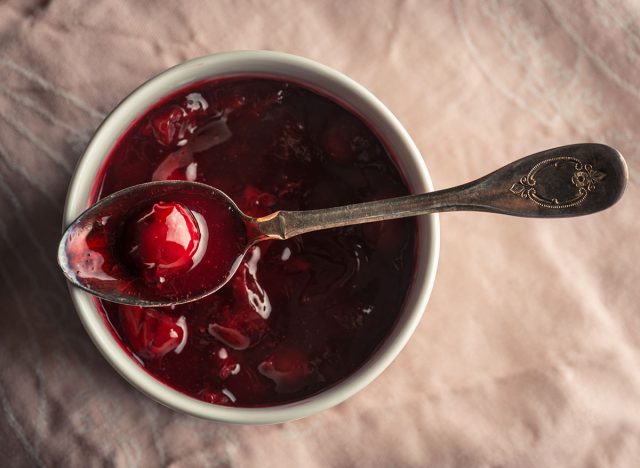
And lastly, making a fruit compote is an easy way to get some fruit into your favorite desserts. “Make a compote by simmering fruits like apples, pears, or berries with a touch of cinnamon and a dash of honey,” says Sabat. “Serve it warm with a scoop of vanilla yogurt or a small piece of angel food cake.”









